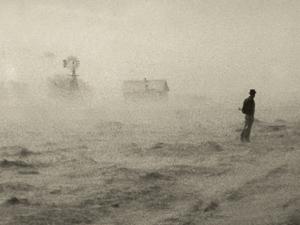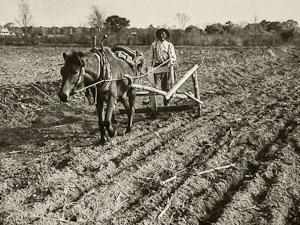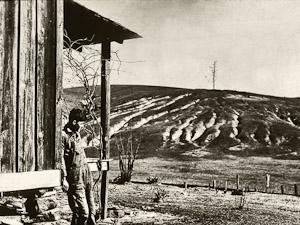

Prior to white settlement, Native Americans described the American West as the place where the wind blew free, the land of the buffalo. Early cowboys treasured the land as well, but felt that it was good for one thing: growing grass. The short grass covering the land had evolved with a root system that extended a foot beneath the surface of the soil. These deep roots served to sustain dependent ecosystems in periods of extreme droughts, sometimes lasting a decade.
As nesters moved in, many found the flat land unsettling, a labyrinth of empty space. Once the buffalo, Indians, early cowboys and any competing predators had been removed, all that was left was a featureless grassland extending hundreds of miles in all directions. This expansive prairie nourished itself on rich, ancient soil that had accumulated over thousands upon thousands of years and gave life to all things above it. Many settlers took up cattle ranching, which began to erode away the soil that held the land together; a few lucrative years were followed by countless tumultuous ones due to life-threatening weather conditions and extreme, lengthy droughts. Overstocked, poorly-adapted cattle proved to be an economic disaster. This should have been the first sign of the extremely hard times to come.
But the economic push to reap the benefits of the land was too strong. By the early 1900s, a free train ride from Kansas City to the Texas panhandle was being offered, and real estate slogans such as “Riches in the soil, prosperity in the air, progress everywhere. An Empire in the making!” became commonplace. Erroneous claims that plowing the land would bring additional rain encouraged further settlement, and the myth that dust could be used as mulch to hold the ground in place became ubiquitous in the East. Cowboys who had been living in the area saw this as a shameful scam, knowing that the panhandle was no place to break sod. By the late 1920s, nearly 100 million acres of this fertile grassland had been plowed up over the course of only a few years.
The human horrors of survival following this monumental unearthing are hard to imagine. Those who chose to stay are a testament to our capacity to connect deeply even to the most hostile of environments. Egan paints images of slow, grueling deaths from dust infiltrating anything and everything. People were unable to touch each other because the strength of the static electricity would knock them to the ground. Death from dust pneumonia ran rampant. The entire ecosystem was out of whack. 
Perhaps the most curious thing, however, was the notion that we had not learned our lesson. For many survivors, this era was best forgotten. One interviewee spoke of burning her journal so that her grandchildren did not have to read the horrors their family had encountered. And thus we are beginning to repeat the cycle.
After ten years of death through dust and drought in the 1930s, rains came and the Ogallala aquifer was tapped. Things began to take root in the dust again. As if the Dirty Thirties had never happened, people began farming, but used the fragile aquifer this time. In 2006, the aquifer was declining at a rate of 1.1 million acre-feet per day, and severe drought once again threatens to destroy human and ecosystem alike.
Photos have some rights reserved. All photos are used with the permission of Flickr Creative Commons Attribution License 2.0 Generic and the U.S. Department of Agriculture.